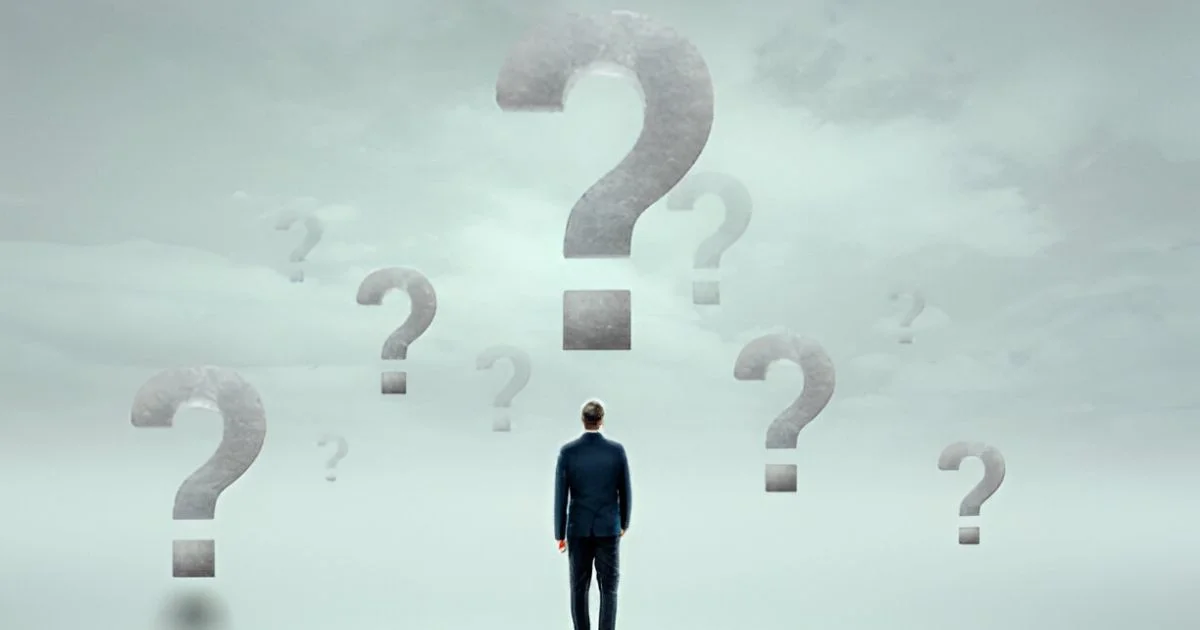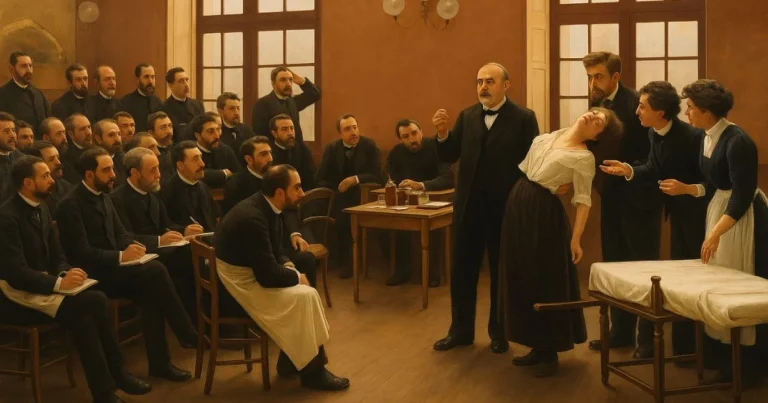The many faces of the invisible: A human odyssey from gods to algorithms
From the earliest days of humanity, we have searched for meaning in what we cannot see. Behind natural phenomena, inner impulses, and inexplicable intuitions, a silent presence seems to guide the order of the world. The invisible is far from empty, it acts as a discreet, persistent force shaping our emotions, beliefs, and decisions.
What escapes the senses often provokes unease. Still, that unease has always been a driving force behind our stories, philosophies, and discoveries. From ancient gods to modern algorithms, from collective archetypes to silent neurons, each era has crafted new ways to narrate the invisible. Beneath every attempt to name it lies a deeper need: to soothe, to understand, and perhaps even to transcend ourselves.
When nature spoke in myths: the dawn of the invisible
There was a time when the world spoke in a language we did not understand. The wind howled without warning, the earth shook, and the sky hurled lightning as if signaling something beyond comprehension. Every natural phenomenon carried a hint of mystery, and that mystery demanded meaning. It had to be named, dressed in stories, and given a face.
In many polytheistic civilizations, the invisible took shape through the elements: Zeus became the lightning bolt, Poseidon the furious sea, Ra the wandering sun. These figures were more than poetic invention, they were tools for making the world inhabitable. By attributing intention to natural forces, myths transformed fear into symbols and imposed order on chaos.
Myths do not arise from nothing. They emerge wherever fear seeks meaning, wherever the unknown becomes too vast to face alone. Telling stories of the invisible created a fragile bridge between humanity and what lay beyond its grasp.
Already, behind these diverse myths, a single intuition lingered: the visible is not enough. In the shadows of the world, there is always a presence, an absence, a call, something elusive that we try to tame with language, symbols, and rituals.
Gradually, this impulse to explain the world would shift from the heavens to the order of things, and eventually, to the order within us, marking the beginning of a more inward, philosophical quest for the invisible.
When the invisible became thought: From reason to inner experience
A turning point arrives when stories alone no longer suffice. The world can no longer be merely told, it must be understood. Fire, water, and the stars cease to be gods and become principles. A new approach emerges: not to populate the invisible with images, but to think it through.
With the first philosophers, the quest changes direction. Thales saw water as the origin of all things; Heraclitus found in fire the pulse of a world in constant flux. For them, the invisible was not divine will but hidden order, accessible to human intelligence. The Logos became the tool for rational understanding. Later, Aristotle would lay the foundations of metaphysics, a discipline concerned with what lies beyond change and perception.
This intellectual shift resonated deeply in the Arab-Muslim world. Thinkers such as Al-Farabi, Avicenna, and Averroes, drawing from Greek philosophy and Islamic tradition, sought to reconcile reason and faith, logic and transcendence. For them, the invisible did not contradict rational thought, it marked its limit and its beyond. Truth was not confined to the senses but revealed through intellectual effort that transcended them.
Alongside this rational pursuit, another path took shape, not aimed at understanding, but at direct experience. Mystics like Al-Hallaj and Ibn Arabi did not question the invisible; they surrendered to it. Through prayer, ecstasy, and silence, they sought intimate union with that which eludes language. The invisible became lived experience, inner revelation, sometimes searing. Between knowledge and rapture, humanity began to realize that the unknown is not only around us, but within us.
Freud, Jung, and the invisible within: The unconscious breaks through
With psychoanalysis, the invisible shifted territory once more. No longer residing in the heavens or matter or the divine, it took root within us. Freud introduced a radical rupture: the self is not master in its own house. Our gestures, thoughts, slips of the tongue, and dreams arise from a hidden realm, an interplay of drives, repressions, and silent conflicts. The invisible became psychic, intimate, almost familiar, and yet, always elusive.
Jung expanded this inner mapping. For him, it wasn’t just about individual impulses but about a collective unconscious shared among all humans. Populated with archetypes, figures like the Mother, the Hero, the Shadow, it became a reservoir of mental imagery inherited from ancient myths. These archetypes no longer explained the cosmos but helped us understand ourselves.
This shift, from a cosmic to an inner invisible, marked a pivotal moment. Fear of the unknown became the engine of introspection. Truth was no longer sought in the stars, but in our dreams. A dialogue opened between science, symbolism, and spirituality. Freud invoked Oedipus; Jung explored ancient myths and traditions. Both stood at the boundary between clinical rationality and archaic imagination.
In this new cartography of the human psyche, the invisible was no longer the opposite of reality, it became its depth. And as this gaze turned inward, it soon found a new frontier of exploration: the brain itself, where modern science would attempt to map mysteries that thought had long sensed.
Neuroscience: Mapping the invisible within
As stories and symbols gave way to laboratories and machines, a new approach to the invisible emerged. This time, it was no longer the dreamed unconscious, but the measured brain. Nevertheless, the goal remained: to make the unseen visible. To decode the hidden workings behind our choices, our emotions, and our fleeting thoughts.
Neuroscience took on the mission of mapping our inner silence. The work of Benjamin Libet, for instance, revealed a disturbing truth: the brain initiates certain decisions before we are even aware of them. The very concept of free will was called into question. Research on implicit memory, involuntary attention, and automatic biases confirmed that much of our behavior is shaped by processes beyond conscious control.
However, this biological invisible is not immutable. The discovery of neuroplasticity, the brain’s ability to change through experience, opened up an unexpected possibility: the invisible can be transformed. Practices like mindfulness and EMDR offer ways to rewire neural circuits related to fear, habit, or pain through attention training or memory reprocessing.
What psychoanalysis once approached through symbols, neuroscience now translates into circuits. But the underlying challenge remains the same: to understand the invisible forces that guide us, not to fully explain them, but to tame them, with fresh rigor and enduring humility.
Artificial Intelligence: The new invisible
Progress has not eliminated the invisible, it has merely reshaped it. What once belonged to mythology, the unconscious, or natural forces now takes form in lines of code, algorithms, and artificial neural networks. Artificial intelligence, often portrayed as a purely rational human creation, is becoming a new reservoir of the unknown. Its decisions, logic, and predictions increasingly elude our understanding, evoking a familiar unease, the same unease once stirred by invisible powers acting behind the scenes.
In this new order, algorithms do more than compute. They observe, learn, and model our desires, habits, and emotions. They operate behind the curtain, in a digital silence that eerily recalls the mystery of ancient deities. We no longer fear Zeus’s lightning bolts, but a manipulated layout capturing our attention or an automated suggestion subtly steering our choices.
In Weapons of Math Destruction, Cathy O’Neil warns against these modern black boxes: beneath their supposed neutrality, they replicate our unconscious biases and amplify our vulnerabilities. Algorithmic invisibility becomes a distorted mirror, reflecting back an image of ourselves that we neither chose nor fully comprehend.
Philosopher Martin Heidegger had already cautioned us: in seeking to measure and rationalize everything, humanity risks reducing the world to what can be exploited, as if only data, numbers, and outcomes matter. Artificial intelligence pushes this logic to the extreme. It sorts, anticipates, and suggests, but in silence, without face, without explanation.
Nevertheless, something resists. These systems harbor a shadowy zone, a fog in their decisions, a gap between their actions and our understanding. That fog, that technological opacity, is still a form of the invisible, one all the more unsettling for being cloaked in neutrality.
Without vigilance, we risk entrusting artificial intelligences not only with our data but with our choices, our emotions, our relationship to the world. If that day comes, it will no longer be us inhabiting the invisible, it will be the invisible that inhabits us.
This journey through the invisible, from mythical tales to neural circuits, from spirituality to artificial intelligence, reveals one essential truth: humanity projects its deepest fears, hopes, and questions into what it cannot see.
Today, perhaps the real challenge is no longer to understand or control everything. Perhaps it is to learn to live with what escapes us, just as we learn to listen to silence or to wait without knowing. What mystics once called ecstasy, psychologists now call mindfulness, and philosophers described as a fertile vertigo, may in fact point to the same truth: a way of being in the world that accepts the unknown without trying to reduce it.
Rainer Maria Rilke wrote:
“Live the questions now. Perhaps then, someday far in the future, you will gradually, without even noticing it, live your way into the answer.”
And perhaps that, ultimately, is the true art of living with the invisible.
References
Freud, S. (1985). L’inquiétante étrangeté. Dans Essais de psychanalyse appliquée. Gallimard.
Heidegger, M. (1986). Être et temps (R. Boehm & A. de Waelhens, Trad.). Gallimard. (Œuvre originale publiée en 1927)
Jung, C. G. (1993). L’homme et ses symboles. Robert Laffont.
Lazar, S. W., Kerr, C. E., Wasserman, R. H., Gray, J. R., Greve, D. N., Treadway, M. T., … & Fischl, B. (2005). Meditation experience is associated with increased cortical thickness. NeuroReport, 16(17), 1893–1897.
Libet, B. (2004). Mind Time: The Temporal Factor in Consciousness. Harvard University Press.
O’neil, C. (2017). Weapons of math destruction: How big data increases inequality and threatens democracy. Crown.
Rilke, R. M. (2005). Lettres à un jeune poète (M. Kalisky, Trad.). Rivages.

Ahmed El Bounjaimi
Copywriter-Content Designer
Master’s in Organizational Communication, Hassan II University
Bachelor’s in Philosophy of Communication and Public Spheres, Hassan II University







